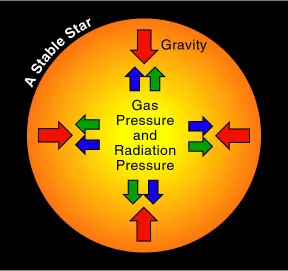# The Lifespan of Stars: A Cosmic Journey Through Time
Written on
Chapter 1: The Lifespan of Stars
The existence of stars is far more prolonged than human life, with even the entire history of humanity being a mere blink in the cosmic timeline. This vast difference means that tracking the life of a single star from inception to its end is beyond human capability. As a result, astrophysicists have chosen to observe stars at various stages of their development, allowing them to piece together a star's lifecycle from the data collected.
Section 1.1: Birth of a Star
Stars begin their journey within massive clouds of gas and dust that populate the galaxy's interstellar medium. These clouds have a very low density, ranging from 0.1 to 1 molecule per cm³. The eventual composition of the star that forms is influenced by the elemental makeup of the interstellar gas in that particular region of the galaxy. Generally, these clouds do not naturally collapse to form stars. For star formation to commence, the cloud must be gravitationally unstable, often triggered by collisions with other clouds or the explosive remnants of a nearby supernova. These events can lead to localized increases in density within the cloud, causing gas to clump together. Under the force of gravity, these clumps compress and heat up, eventually leading to nuclear fusion and the birth of a protostar.

As the core temperature and density rise, stable nuclear fusion reactions begin, marking the transition from protostar to star. This formation phase is relatively quick; most massive stars complete this process within several hundred thousand years.
Subsection 1.1.1: Gravitational Equilibrium
After a star's formation, it spends the majority of its life in a state known as gravitational equilibrium. In simpler terms, this means that the outer layers of the star are drawn inward by gravity, while the internal pressure from heated gases and radiation pushes outward. This balance allows the star to maintain stability for nearly its entire lifetime.

This state persists until the hydrogen in the core is depleted and converted into helium. As the nuclear reactions slow, pressure decreases, and gravity begins to compress the star again. For stars like our Sun, this main sequence phase lasts approximately 10 billion years. What follows next is dictated by the star's mass.
Section 1.2: The Death of a Star
The demise of stars varies significantly based on their mass. Instead of delving into every subtype, we will focus on three general categories: low-mass, medium-mass, and high-mass stars.
Low-mass stars (0.2–0.5 solar masses) enjoy extensive lifespans, remaining on the main sequence for over 15 billion years. Theoretically, low-mass stars won't evolve into red giants like the Sun; instead, they will heat up and transition into blue dwarfs.
Medium-mass stars (up to 1.5 solar masses) spend around 10 billion years on the main sequence before briefly becoming subgiants or red giants, depending on their mass. During this phase, their radii expand, and temperatures drop. This giant stage lasts only a few million years before they shed their outer layers, leaving behind a white dwarf that will gradually cool over billions of years. Notably, our Sun is expected to enter its red giant phase in about 5 billion years.

High-mass stars (around eight solar masses and above) transform into supergiants relatively quickly. Their period of gravitational equilibrium lasts from tens to a few hundred million years before they expel their outer layers and evolve into Wolf-Rayet stars, culminating in a supernova explosion. Depending on the mass of the remaining core, this can result in a neutron star or a black hole.
A few stars defy these general patterns for reasons still being explored. For instance, the Methuselah star is estimated to be around 13.5–13.8 billion years old, which is comparable to the age of the Universe itself.
In conclusion, stars typically have lifespans that can extend up to 20 billion years if they are of lower mass. Conversely, larger and more luminous stars tend to have shorter lives, with the most massive stars often existing for less than 100 million years.
Chapter 2: Exploring Stellar Lifecycles
The first video, "How Long Do Massive Stars Live?" provides an overview of the lifespans of massive stars and the factors influencing their longevity.
The second video, "How do stars live and die?" (Ask an Astronomer), explores the lifecycle of stars, focusing on how they are born, evolve, and ultimately perish.
If you want to see more articles about space in your feed, don’t forget to clap!
Subscribe to our channel and feel free to ask questions; I’ll address them in upcoming articles.
If you appreciate my work, consider supporting me by becoming a Medium member for just $5 a month, helping us produce even better content.